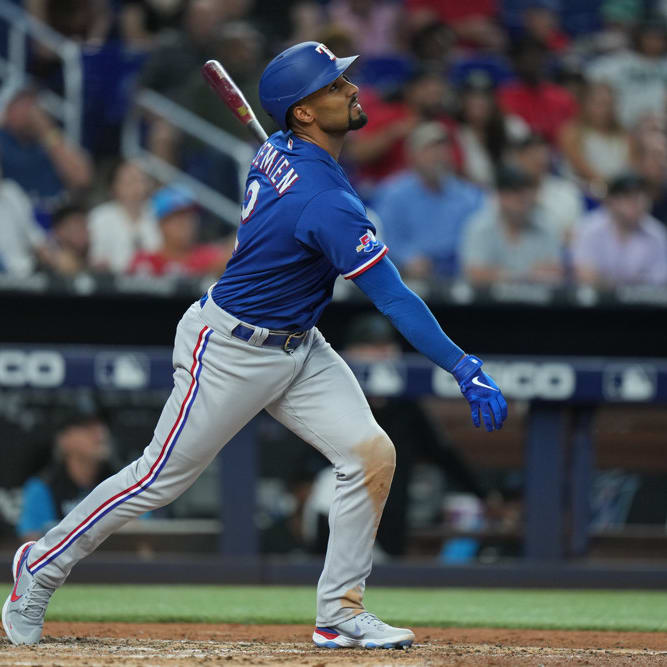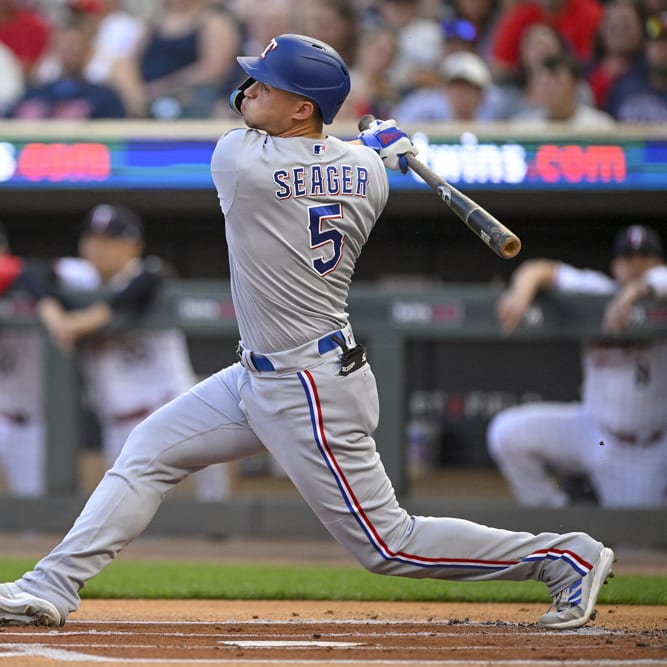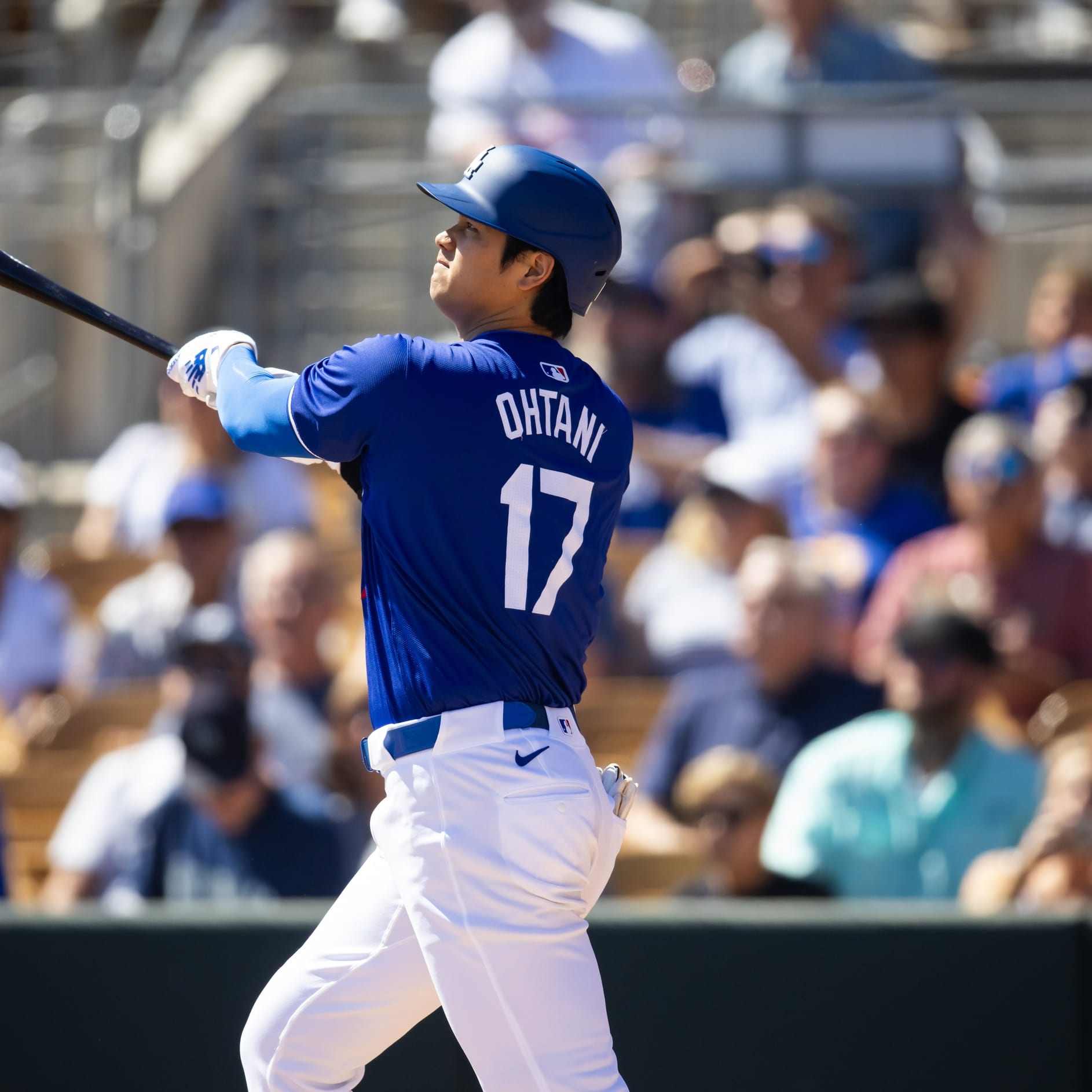This article is part of our The Wheelhouse series.
Are you the same person you were five years ago? How about five weeks ago? The variance is always going to be wider over a longer duration of time, but people change regularly, if not constantly – both for better and worse – and those around them are forced to adjust.
It is much easier to see that change in an old friend from high school at a 10-year reunion than it is to spot the incremental changes in a closer friend or relative that you might see every day.
Numbers would help. If every day, there were a way to track everything your spouse, friends, or family members thought and did, patterns would likely develop and make a radical change seem much more gradual.
Maybe this already happens in a psychology lab somewhere – as this is sounding like the introduction to a TED Talk.
Fortunately, as fantasy players we're spoiled by the amount of data and information available at our fingertips, and the industry is only scratching the service in terms of the tools and metrics at our disposal. Still, we're challenged to constantly re-evaluate the way we value players as their health and skills are steadily in flux.
To that end, one area we can monitor players from year-to-year in an effort to better understand why things are unfolding a particular way is battled ball profiles. A thesis could be written on this data and the reasons that it may change over time for a particular
Are you the same person you were five years ago? How about five weeks ago? The variance is always going to be wider over a longer duration of time, but people change regularly, if not constantly – both for better and worse – and those around them are forced to adjust.
It is much easier to see that change in an old friend from high school at a 10-year reunion than it is to spot the incremental changes in a closer friend or relative that you might see every day.
Numbers would help. If every day, there were a way to track everything your spouse, friends, or family members thought and did, patterns would likely develop and make a radical change seem much more gradual.
Maybe this already happens in a psychology lab somewhere – as this is sounding like the introduction to a TED Talk.
Fortunately, as fantasy players we're spoiled by the amount of data and information available at our fingertips, and the industry is only scratching the service in terms of the tools and metrics at our disposal. Still, we're challenged to constantly re-evaluate the way we value players as their health and skills are steadily in flux.
To that end, one area we can monitor players from year-to-year in an effort to better understand why things are unfolding a particular way is battled ball profiles. A thesis could be written on this data and the reasons that it may change over time for a particular hitter, but I will take a more concise approach here.
Let's say for the sake of simplicity that there are three primary reasons that batted ball profiles change.
Injuries – This one is pretty straightforward. If a player has an injury it can significantly alter swing mechanics. I have put myself on the side that believes specific injuries may even lead to unique shifts (i.e. shoulder injuries may increase groundball rates, or infield flyball rates).
Intentional Swing Adjustments – The best example in recent memory is Jose Bautista, who completely rebuilt his swing in 2009 and resurrected his career in the process. His batted ball profile changed completely when you look at his 2010-12 data against pre-2010 marks. Curtis Granderson's adjustments have made him a player capable of hitting left-handed pitchers with authority after he struggled against them for the first seven years of his big league career.
Improving/Eroding Skills – Derek Jeter has always hit his share of balls on the ground, but his age 36-38 seasons are understandably more extreme than previous ones. Conversely, a young player can improve his strength and bat speed, as well as his pitch recognition and make better contact with a larger percentage of line drives, or an increased HR/FB rate.
Admittedly, the lack of a scouting background makes this task more challenging, but it's still worth tracking the data points even if reverse engineering the cause is ultimately required.
Below, I've included the 2012 profile (LD%/GB%/FB%) followed by the same numbers from 2011.
For Better
Jason Heyward, OF, ATL (20.5%/38.4%/41.1%, 13.1%/53.9%/33.0%)
Heyward simply was not healthy in 2011 and the results reflect it as he took a significant step back from his impressive debut as a 19-year-old rookie. The quality of his contact slipped last season, as he was hitting line drives at mere 13.1% clip while leading all hitter with 400-plus plate appearances in infield flyball rate (21.8%). Not surprisingly, Heyward's numbers have improved with the swap of groundballs for line drives and flyballs. Further, he's sliced that devasating infield flyball rate down to 10.3% (that type of batted ball does nearly as much damage to batting average as a strikeout). There's still room for improvement in that Heyward has struck out in 22.6% of his plate appearances (20.4% in 2011), but the return of his power is not a fluke and he's capable of reaching the 25-homer mark before season's end.
Austin Jackson, OF, DET (19.4%/41.3%/39.4%, 16.8%/47.1%/36.1%)
Jackson's GB/FB mark continues to improve in his third big league season, while the increased power he's shown thus far is supported by an increase in line drives and flyballs at the expense of grounders. Good things are happening more frequently when Jackson lofts the ball, as he's toting a career-best 11.1% HR/FB rate this season. In this case, it's a dedicated adjustment to swing mechanics and for those interested in visuals, the Walkoff Woodward blog covered Jackson's changes in a post back in April. In addition to the changes in the type of contact being made, Jackson has increased his walk rate to a career-best 12.3% while shaving his strikout rate to a new low (20.6%). The price tag is only going to continue to rise here.
Mike Moustakas, 3B, KAN (14.8%/34.5%/50.7%, 20.4%/38.4%/41.2%)
Year 2 has been very productive for Moustakas to this point, as he's driving the ball more consistently when he hits a flyball (12.6% HR/FB after a 4.2% mark last season) after increasing his flyball rate by nearly 10% from his rookie campaign. His numbers in 2012 are nearly identical to what we saw from him at Triple-A Omaha prior to his promotion last season, so it's not as case where Moustakas is out over his skis by any stretch. It's interesting to note that Moustakas' contact rate is actually down to 79 percent, which suggests that even better numbers could be on the horizon down the road with improvement in that aspect of his game.
Carlos Ruiz, C, PHI (26.0%/44.9%/29.1%, 21.0%/41.7%/37.3%)
Ruiz has progressively become a better hitter over the last five seasons, but his overall spike in production as we near the end of June is a bit suspect. Most catchers lack the speed to maintain an elevated BABIP, and Ruiz's .371 mark is fueled by a career-high 26.0% line drive rate. Further, the 11 home runs he's hit through 69 games are a career-best for a season as well, and it should come as little surprise that Ruiz's HR/FB mark has skyrocked to 19.3% after a previous full-season high of 8.1%. I have not season any evidence or detailed breakdown of Ruiz suggesting that he's altered his swing mechanics, so tread carefully here. In previous seasons, Ruiz was an asset in leagues that utilize OBP because he selectively took his walks while batting out of the No. 8 spot. This season, he's been used in the No. 4-7 spots, and his walk rate has tumbled to a career-low 6.3%.
For Worse
Ryan Zimmerman, 3B, WAS (15.6%/52.3%/32.2%, 15.7%/50.5%/33.8%)
While the production from Zimmerman during a four-game series with the Rockies (7-for-19, two homers and seven RBI) following a cortisone shot this weekend is an encouraging sign, take it with the appropriate grain of salt as the series was played in Denver. The profile from last season doesn't vary much from what we're seeing through 60 games in 2012, but Zimmerman's batted ball type changed significantly last season from his previous norms and the per-game production has tanked in a similar fashion.
2009 – (18.7%/39.6%/41.6%) .292, 33 HR, 110 R, 106 RBI in 157 games
2010 – (17.6%/41.2%/41.2%) .307, 25 HR, 85 R, 85 RBI in 142 games
2011 – (15.7%/50.5%/33.8%) .289, 12 HR, 52 R, 49 RBI in 101 games
2012 – (15.6%/52.3%/32.2%) .235, 5 HR, 34 R, 30 RBI in 60 games
Long term, the good news for Zimmerman is that he does not have any structural damage in his shoulder, but without prolonged rest, there has to be concern that he will be battling inflammation all season long and playing it less than 100 percent. The big series against the Rockies could provide a path to a few more optimistic buyers than you would have found a week ago.
It's also worth noting that Hanley Ramirez experience a similar two-year shift in 2010-11 while dealing with shoulder woes, but has regained some of his lost line drives and flyballs this season.
Joe Mauer, C, MIN (22.0%/59.0%/19.0%, 23.1%/55.4%/21.5%)
Mauer has missed time this season with knee, quad and thumb ailments, but for the most part has been able to stay in the mix on a near everyday basis for the Twins through the first three months. If the numbers from the last two seasons are any indication, Mauer will be lucky to hit double-digit homers in a season again. It's unclear if health, adjustments he's made to become a more effective hitter at Target Field, or some combination of both are to blame, but Mauer's pre-2011 batted ball data was radically different:
2009 – (22.6%/47.8%/29.5%) .365, 28 HR, 94 R, 96 RBI in 138 games (final year of the Metrodome)
2010 – (24.2%/46.8%/29.0%) .327, 9 HR, 88 R, 75 RBI in 137 games
Even in his current form, Mauer is a highly valuable commodity behind the plate. For the season, he's hitting .321/.414/.433 with three homers, 34 RBI and 34 runs scored in 66 games. According to our in-season dollar values, Mauer ranks fifth among catchers this season despite the lack of power.
Howie Kendrick, 2B, LAA (17.5%/59.7%/22.8%, 21.9%/51.6%/26.5%)
As the numbers from last year suggest, Kendrick is going to hit his share of groundballs even in his most productive seasons. It's been a disappointing follow-up to the delayed breakout for Kendrick, who has just four homers through 71 games after going deep 18 times last season. Losing more than four percent from his line drive rate does not help matters either, and a drop in HR/FB (from 16.5% last season to 8.5%) thus far points to fewer instances where Kendrick is squaring up the ball. Is it an undisclosed injury? Is it mechanics? For one reason or another, the contact is weaker and the groundball rate has skyrockted to 59.7%.
Alexei Ramirez, SS, CHW (18.9%/50.4%/30.7%, 19.3%/45.5%/35.2%)
Ramirez has a lengthy track record of starting slow – his career splits in April are dismal – but he has historically shown signs of turning things around well before the end of June. This season, it's been a disaster for the White Sox's shortstop as he's hit just one home run over 301 plate appearances entering play Friday while his walk rate his tumbled to a career-low 2.7% and his HR/FB mark has crashed to 1.3% (career 9.2%). Much like Kendrick, there has been no indication of an injury in play for Ramirez, the reason behind the increase in groundball rate and dismal HR/FB percentage is something of a mystery. Given the home park, lineup, and strangehold Ramirez should have on playing time, buying him on the cheap is prudent barring information regarding a lingering ailment.










